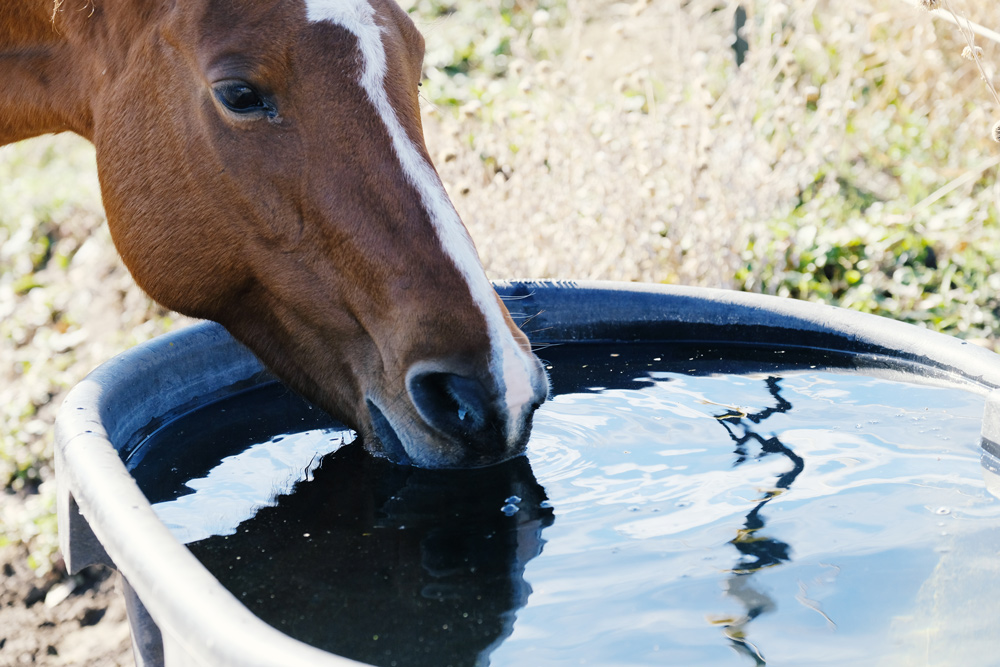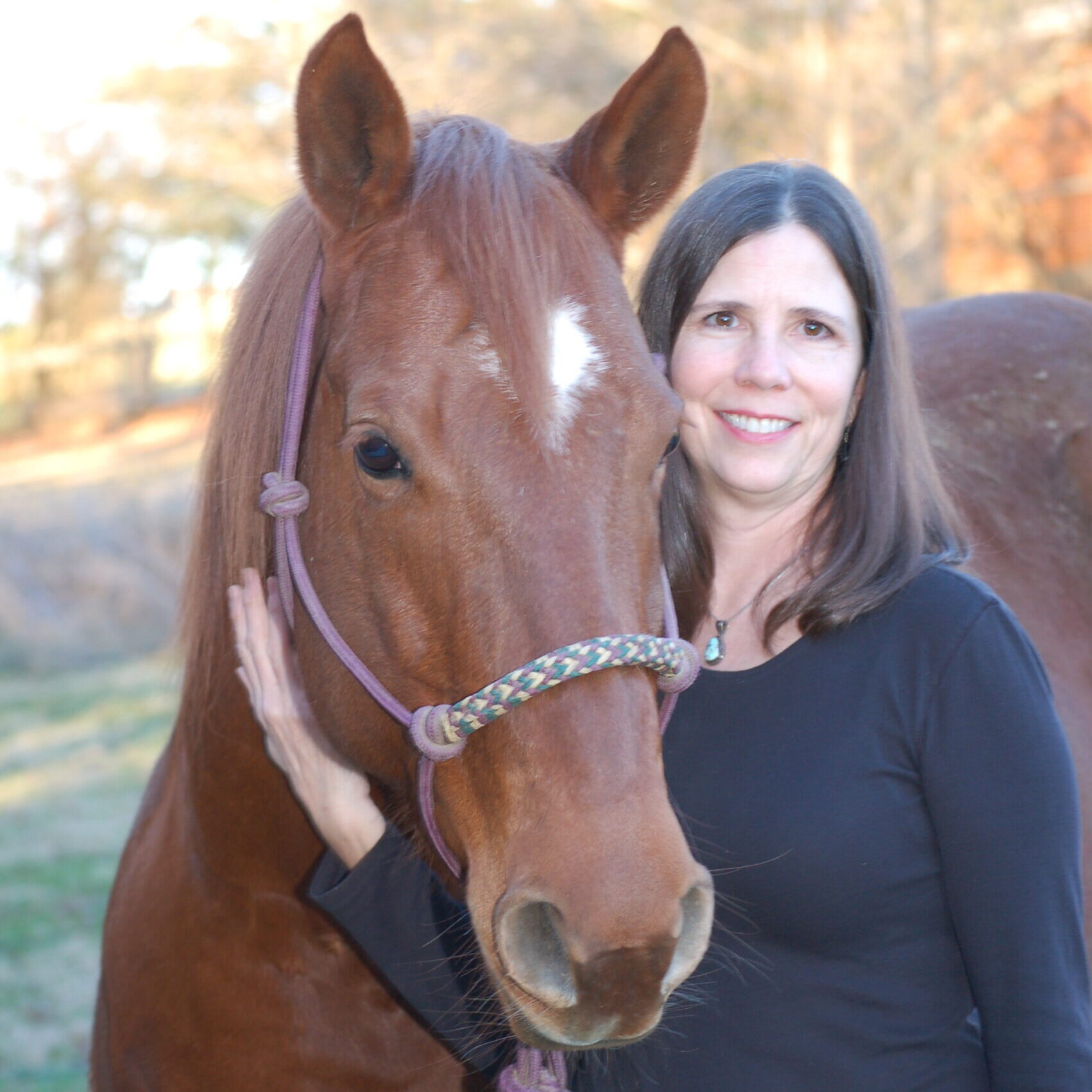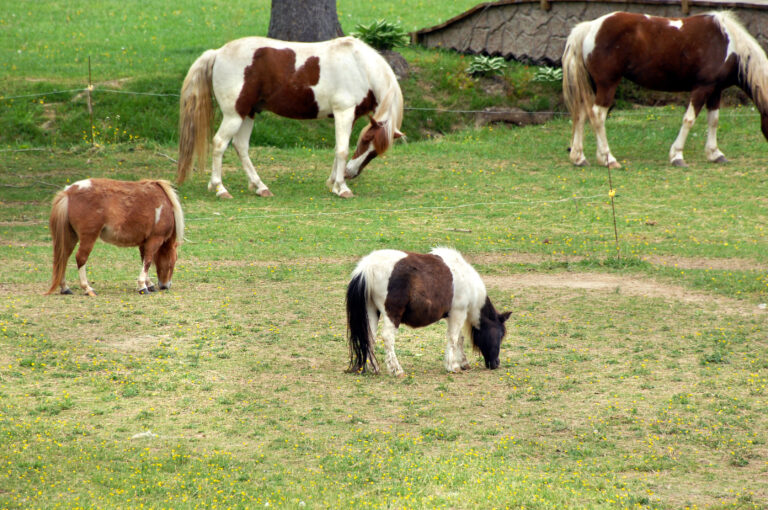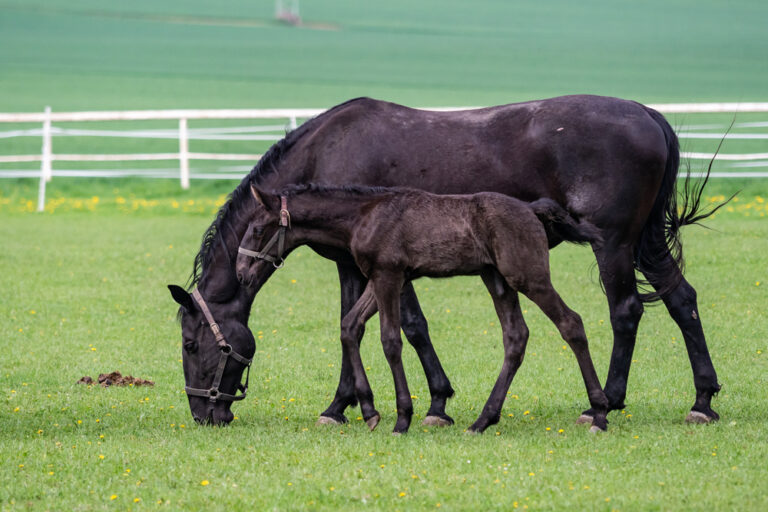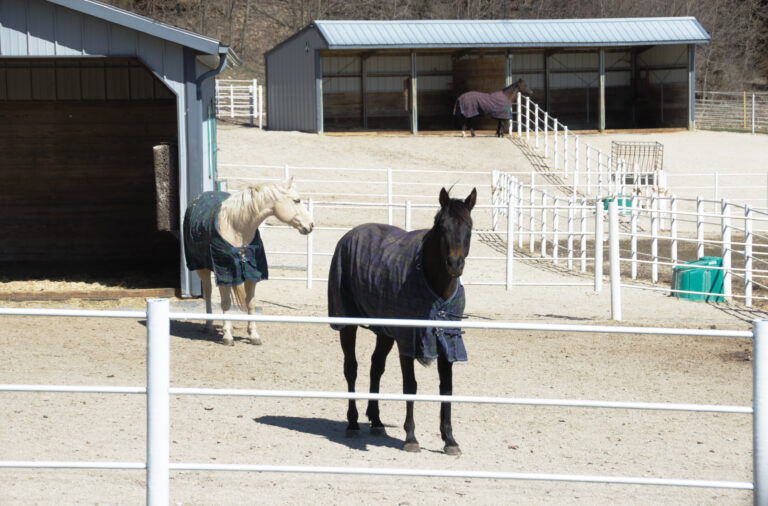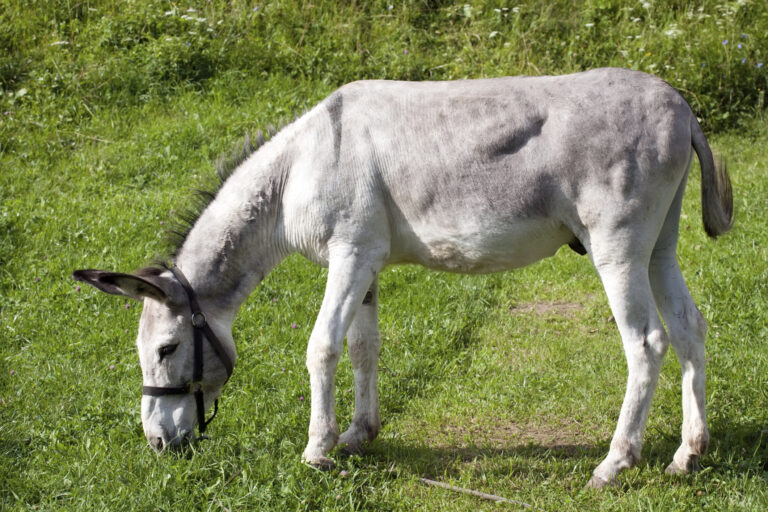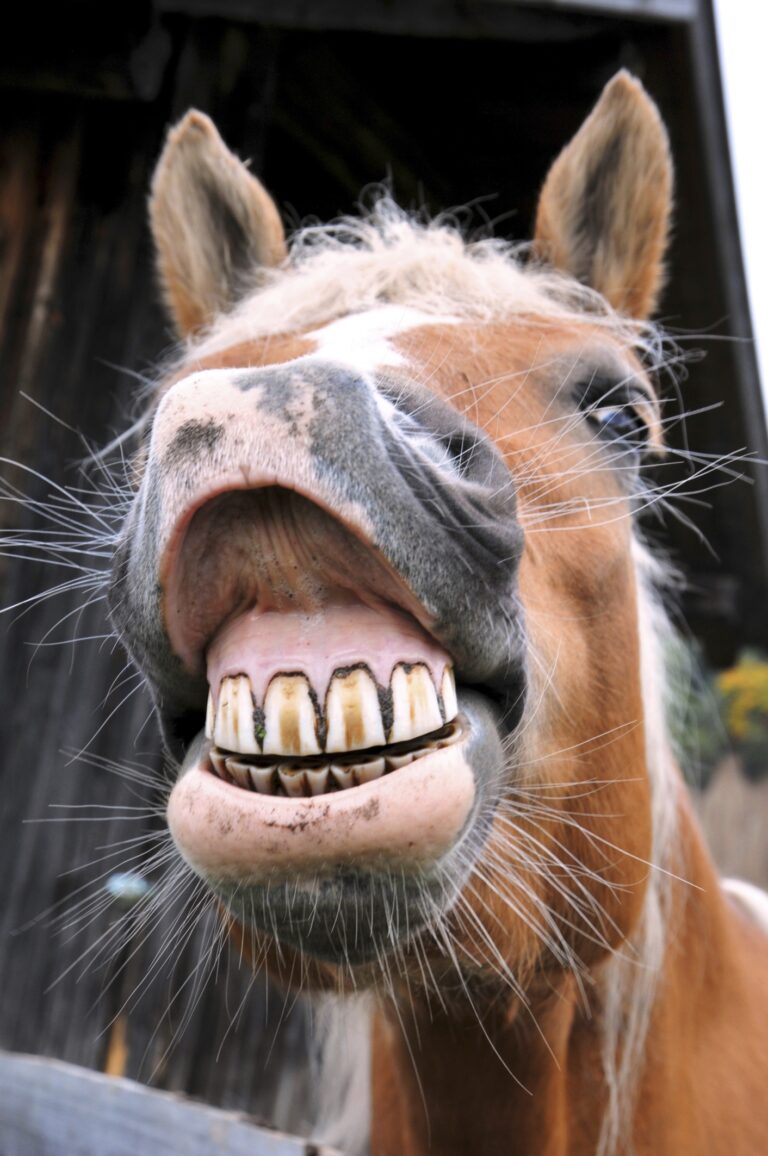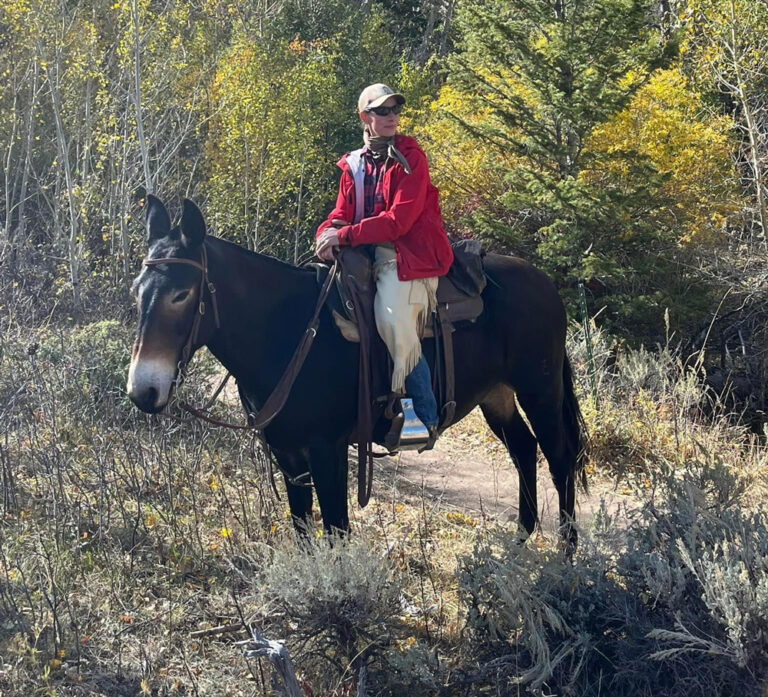Equine protozoal myeloencephalitis (EPM) is a neurologic disease caused by a protozoal parasite. In this podcast episode, Dr. Amy Johnson discusses EPM in horses, including clinical signs, prevention strategies, and more. Johnson is a board certified large animal neurologist and internal medicine specialist. She is the Marilyn M. Sipson Professor of Equine Medicine at the University of Pennsylvania.
(Editor’s note: The content of this podcast is the expert’s approach to the topic. Please consult with your practitioner if you have questions.)
What Is EPM?
EPM is a neurologic disease that affects equines, primarily horses, said Johnson. It is caused by a protozoal parasite, which basically is an organism that enters a horse and travels to the spinal cord and brain. “It causes inflammation there, and that is what results in neurologic signs,” explained Johnson.
“EPM is the most common infectious neurologic disease in horses,” she continued. “It’s important to recognize it’s not a contagious disease. It is not spread from horse to horse. It’s also important to know it doesn’t affect people. There is a related protozoal disease that can infect people called toxoplasmosis. But that is a different species.”
Johnson said this protozoal species is very common in the environment in North and South America. “So a lot of horses are exposed to it, but only a small percentage of horses develop disease,” she stated.
Clinical Signs of EPM
The clinical signs of EPM can be quite varied depending on where the organism invades the horse’s neurologic system.
“It can be anything from an unusual way of walking that looks like a lameness to really overt evidence of brain dysfunction,” said Johnson. She said it can also manifest as a horse that “isn’t thinking straight and is acting unresponsive. It could be walking in circles constantly.”
How Does EPM Spread?
EPM spreads to horses through opossum feces, said Johnson. “The opossum is the definitive host for this,” she noted.
In order to be exposed to this protozoa and to acquire EPM, Johnson said the horse has to eat or drink something that has been contaminated with opossum feces.
“The disease is certainly most prevalent in areas where opossums abound,” she noted. “What we know, of course, is that horses and the things that horses eat are not stationary. So a horse may spend a small portion of its life in an area where this organism is common in the environment, then move to an environment where the organism is less common. But, the horse has already been exposed. And we don’t always know the exact timing between exposure to the organism and when the horse shows clinical signs. It’s very possible that it’s living in the horse for a period of time before they start to show clinical signs.
“The other thing, of course, is that hay and grain is shipped all over the country,” she reminded the listeners. “So, should there be contamination of the food by opossum feces and the food gets shipped to an area where there aren’t a lot of opossums, horses are consuming feed that could still be infected.”
Duration of EPM Infection
It isn’t known exactly how long a horse can remain infected with the organism that causes EPM. But, “many veterinarians are aware of horses that developed clinical signs that were eventually diagnosed as EPM months to even years after shipping to a continent or a country where the disease is not naturally found,” said Johnson. “So, it seems to be able to be dormant in a horse for a prolonged period of time, certainly more than days.”
Donkeys, Mules, and EPM
Johnson wanted owners of donkeys and mules to know they can be exposed to the organism that causes EPM and mount an immune response. “Meaning that if you check their blood sample, they might have antibodies against this protozoa.
“But, to the best of my knowledge, there has not been a clinical case of a donkey or a mule being affected with neurologic disease,” said Johnson. “That’s interesting to me.
“I’m not sure exactly what’s different about their immune system” that affects their likelihood of getting this disease, she continued. “But, it is certainly more a disease of horses specifically and occasionally ponies. Not quite as commonly ponies, but horses rather than mules and donkeys.
“So I guess your senior donkey owners can be a little bit more at peace right now,” Johnson said.
EPM in Senior Horses
Johnson said horses like humans have immune systems that don’t work quite as well as the body ages.
Horses that live where opossums are common are likely to have been exposed at least once in their lifetimes to the organism that causes EPM, Johnson said.
“If they’re living in an area where opossums abound, they’re probably getting repeated exposures,” she said “It may be that when they’re in the prime of their life and have a robust immune system, that they’re able to keep this organism from making its way into their brains and their spinal cords. So, even though they’re being exposed, their bodies eliminate it or kill it before it ever causes any harm to their nervous system.”
Johnson said as horses get older, their immune systems are less robust. That is particularly true if they develop PPID (pituitary pars intermedia dysfunction, also known as Cushing’s disease). “We know this is a very common disease of older horses that leads to immune suppression,” she said. “They may not be able to fend off this organism.”
She said owners of senior horses should have the animals’ immune status in mind. If the horse is displaying signs of PPID, it should be treated to try to optimize the function of their immune systems and minimize or mitigate the deleterious effects of PPID on the total body.
Keeping Opossums at Bay
Opossums keep tick populations down in an agricultural area, so they are useful critters. But owners need to keep opossums away from horse feed and water sources to avoid exposure to opossum feces and the organism that causes EPM.
“Keep the feed room door locked and keep them out of the hayloft,” encouraged Johnson. She added that owners should not allow opossums to crawl around areas where horse feed is stored. Johnson said that really should be the same for any wild animals.
She also encouraged owners to clean water tanks or troughs regularly. Horses can be exposed to opossum feces through water contamination.
Final Words
Johnson encouraged senior horse owners to keep their horses as holistically healthy as possible. “Make sure that we put them in the best place for their immune system to function by making sure they’re adequately fed and they’re in good body condition, which involves addressing their teeth,” she reminded.
“Keeping opossums out of the barn, out of the stalls, and out of the feed rooms is important,” said Johnson.
She also said recognizing the signs of EPM as soon as they develop is important. “This means knowing your horses, knowing the way they usually move, and looking at them every day if possible,” Johnson said.
Johnson understands that some older horses are retired out in a field and might be seen once or twice a day. Other seniors might be out in a big pasture where no one lays eyes on them for a period of time.
She encouraged owners to make an effort to watch each horse as it is walking, moving, eating, and interacting with its environment once or twice a day. “Look for those early signs of dysfunction before the disease reaches a critical point where the horse is really struggling to maintain its balance or becomes recumbent in the middle of a field somewhere,” said Johnson.
About Dr. Amy Johnson
Dr. Amy Johnson is the Marilyn M. Simpson Professor of Equine Medicine at the University of Pennsylvania. She is board certified in large animal internal medicine and neurology and was the first American veterinarian to obtain these credentials. Her clinical caseload consists primarily of horses with neurologic problems, including spinal cord compression, neurodegenerative disease, and infectious diseases. She also provides consultations for farm animals with neurologic disease. Her research efforts focus on improving our ability to diagnose the cause of neurologic disease in horses. Dr. Johnson has worked at PennVet’s New Bolton Center since 2007 and is the current Section Chief of Internal Medicine and Ophthalmology.
Further Content
- Inflamm-aging in Senior Horses. Kimberly S. Brown. MySeniorHorse.com
- Quality of Life Tool for Monitoring PPID Horses. Alex Beckstett with Dr. Edd Knowles. MySeniorHorse.com
- What is PPID and Why Should I Care? Dr. Hal Schott. MySeniorHorse.com
- Developing a Feeding Plan for Your PPID Horse or Pony. Dr. Pat Harris. MySeniorHorse.com
- Keeping Aging Horses Strong: Understand Muscle Mass and Protein. MySeniorHorse.com
- Muscle Atrophy Research in Horses and Ponies. Kimberly S. Brown. MySeniorHorse.com
- Equine Muscle Mass: Detecting and Monitoring Changes. Dr. Alisa Herbst. MySeniorHorse.com
- Keep Aging Horses Strong: Understand Muscle Mass and Protein. Dr. Kristine Urschel. MySeniorHorse.com
- A Guide to Equine Body Condition Scoring. Sarah Nelson. MySeniorHorse.com
Sign up for My Senior Horse’s FREE newsletter to get the latest information about equids 15 years and older delivered straight to your inbox!
-
View all posts
Kimberly S. Brown is an award-winning writer and publisher. She is the Editorial Director for My Senior Horse. Brown spent 10 years at Equine Network, parent company of My Senior Horse. Prior to that she worked for three years in equine nutrition after she retired from nearly 30 years working at The Blood-Horse. Brown spent the last 15 years of her time at that organization creating and developing The Horse and TheHorse.com.

